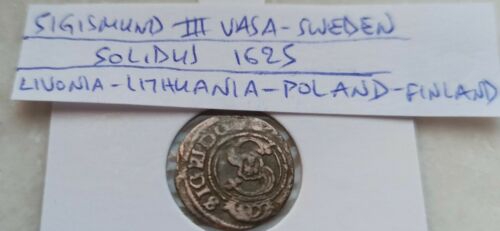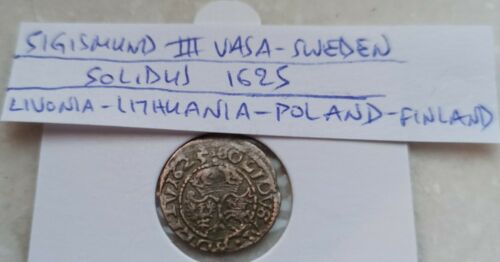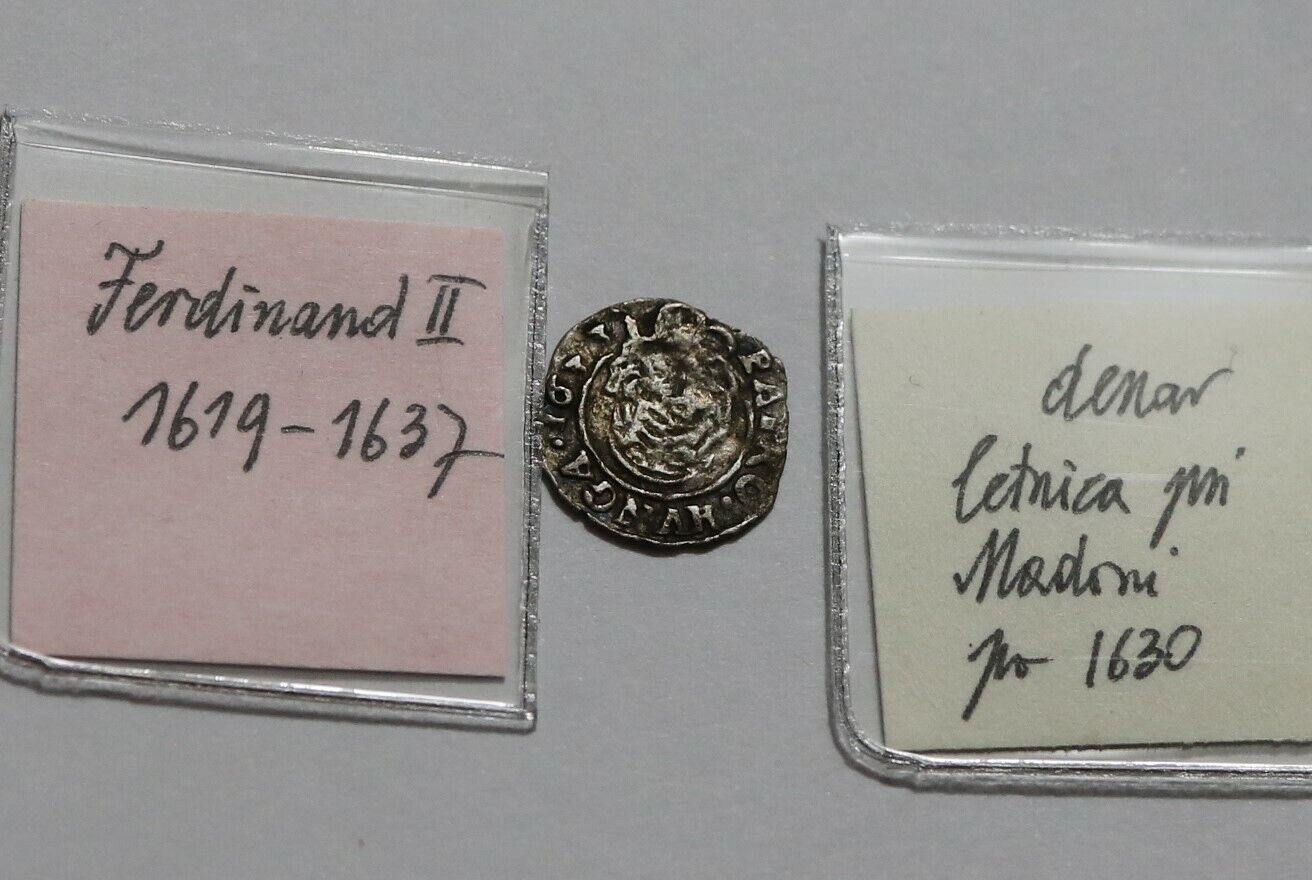-40%
Sigismund III Vasa SWEDEN 🇸🇪 Silver bilion Solidus 1625 🇫🇮 Livonia Finland
$ 10.42
- Description
- Size Guide
Description
The item on the pictures is the one that you will receive. Look carrefully and judge for your self for the quallity and the grade.S&h is .90 for all the world.
Each additional item is free.
If your country isn't on my shipping list,please contact me.
If you are having problems with the ebay system or adding items to card so you can combine multiple purchases or any other question,please contact me whenever you like.
I have many other items not listed.
All from my personal collection.
If you want to see,just ask!
YOU CAN BID WITH CONFIDENCE.
SELLER WITH 100% POSITIVE FEEDBACK.
Sigismund III Vasa
House of Vasa
Born:
20 June 1566
Died:
30 April 1632
King of Poland
Grand Duke of Lithuania
1587–1632
King of Sweden
Grand Duke of Finland
1592–1599
Brienne claim
1596-1632
— TITULAR —
King of Sweden
1599-1632
Sigismund III Vasa by
Pieter Soutman
King of Poland
Grand Duke of Lithuania
Reign
18 September 1587 – 19 April 1632
Coronation
27 December 1587
Predecessor
Anna Jagiellon
and
Stephen Báthory
Successor
Władysław IV
King of Sweden
Grand Duke of Finland
Reign
17 November 1592 – 24 July 1599
Coronation
19 February 1594
Predecessor
John III
Successor
Charles IX
Born
20 June 1566
Gripsholm
,
Mariefred
,
Sweden
Died
30 April 1632 (aged 65)
Warsaw
,
Poland
Burial
4 February 1633
Wawel Cathedral
,
Kraków
Spouses
Anne of Austria
(
m.
1592
;
d.
1598
)
Constance of Austria
(
m.
1605
;
d.
1631
)
Issue
among others...
Władysław IV of Poland
John II Casimir of Poland
John Albert, Bishop of Warmia and Kraków
Charles Ferdinand, Duke of Opole
Anna Catherine Constance, Electress Palatine
Full name
Zygmunt III Waza (in Poland)
Sigismund (in Sweden)
House
Vasa
Father
John III of Sweden
Mother
Catherine Jagiellon
Religion
Roman Catholicism
Signature
Sigismund III Vasa
[a]
(20 June 1566 – 30 April 1632
N.S.
), also known as
Sigismund III of Poland
, was
King of Poland
,
Grand Duke of Lithuania
and monarch of the united
Polish–Lithuanian Commonwealth
from 1587 to 1632 as well as
King of Sweden
and
Grand Duke of Finland
from 1592 to 1599.
Sigismund was the son of
John III of Sweden
and his first wife
Catherine Jagiellon of Poland
.
[1]
Elected monarch of the
Polish–Lithuanian Commonwealth
in 1587, he sought to unify Poland and Sweden under one Catholic kingdom, and succeeded for a time in 1592 (
Polish–Swedish union
). After he had been deposed in Sweden by his
Protestant
uncle,
Charles IX
, he spent much of his life attempting to reclaim the Swedish throne.
[1]
A pious yet erratic ruler, Sigismund attempted to hold
absolute power
in all his dominions. He suppressed internal opposition, strengthened the power of the
Catholic Church
and granted greater privileges to the
Jesuits
. He actively interfered in the affairs of neighbouring states; he took advantage of a period of civil unrest in
Muscovy
, known as the
Time of Troubles
, and
invaded Russia
, holding
Moscow
for two years (1610–12) and
Smolensk
thereafter. Sigismund's army also defeated the
Ottoman
forces in
Moldavia
(1617–21), which systematically led to the demise of Sultan
Osman II
. However, the Polish-Swedish conflict had a less favourable outcome. After a series of short skirmishes and wars ending in a truce,
Gustavus II Adolphus
of Sweden launched a campaign against the Commonwealth which resulted in the loss of
Polish Livonia
(Estonia and Latvia) with
Riga
and in Sigismund's claim to the Swedish crown.
[2]
Sigismund remains a highly controversial figure in Poland. One of the country's most recognisable
monarchs
, he moved the country's administrative capital from
Kraków
to
Warsaw
in 1596. His long reign coincided with the
Polish Golden Age
, the apex in the prestige, power and economic influence of the Polish–Lithuanian Commonwealth. On the other hand, it was also during his reign that the seeds of decline surfaced which would lead to the eventual demise of the Commonwealth.
[3]
He was commemorated in Warsaw by
Sigismund's Column
, one of the city's landmarks and the first
secular
monument in the form of a column in
modern history
.
[4]
It was commissioned after Sigismund's death by his son and successor,
Władysław IV
.










